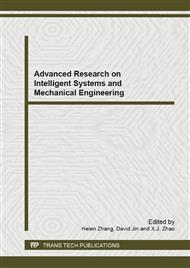p.97
p.101
p.105
p.110
p.115
p.119
p.123
p.129
p.137
Feedback Linearization Control for PMSG Wind Power Generation System with Application of Wind Turbine in Mechanical Engineering
Abstract:
The fluctuation, intermittence and uncertain are the characteristics of wind energy which cause wind energy output power fluctuation, so the wind power generation system was a typical nonlinear system, which was hard to be controlled exactly by traditional controllers, so, the feedback linearization control was applied to wind power generation system (WPGS) in mechanical engineering, which was to reduce the cost of wind energy conversion system and improve its performance. Feedback linearization control contains coordinate transformation, Lie derivative solving, and inverse coordinate transformation module, the control strategy was proposed. The WPGS model was constructed under MATLAB platform, with feedback linearization control theory based on differential geometry, the coordinated transformation and nonlinear state feedback were obtained. the simulation parameters was designed and the simulation result shows the control model was stable and direct feedback linearization control with higher tracking performance, which can effectively implement maximum energy capture.
Info:
Periodical:
Pages:
115-118
Citation:
Online since:
January 2013
Price:
Сopyright:
© 2013 Trans Tech Publications Ltd. All Rights Reserved
Share:
Citation:


